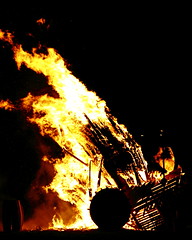The power of the symbol
Ever since humans began using symbols they have been endowed with power beyond their immediate use. Symbols arose out of a need to communicate; however, their usage down the history has shown that they soon overpowered the mind that created them, for the better in some areas and for the worse in others. As social activities grew in number and complexity, the importance of symbols soon became apparent and consequently they began to appear in many different forms, shapes, sizes and colours. The purpose of symbols went far beyond simple representations of things – from merchant seals and regal emblems, through social bonds and tribal loyalties, to street signs and scientific notations, and wars, symbols have played a significant role in human affairs.
Historians tell us that symbols have been in use since millennia, going as far back in time as when humans were making stone implements more than 7000 years ago. Rock art and cave paintings of ancient human societies reveal that it was customary to use symbols in pagan rites. For example, the swastika, meaning ‘well-being’ in Sanskrit, was used by the Indus Valley people more than 5000 years ago. It is still in use today in most Hindu rituals for the same purpose. Very few symbols like the swastika have survived to the present day, though many like those used on coins and stone tablets have lost their significance. Some have undergone changes in form, but continue to serve the same purpose like the signs of the zodiac, which probably predate the swastika by a thousand years. Many cross-like symbols existed since pre-historic times before it evolved into the cross of Christianity as we know it today. The Egyptian sphinx and Aladdin’s lamp evoke feelings of wonderment and awe
